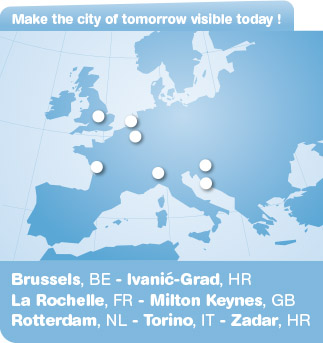Rotterdam, the Netherlands
Inspired by the example of Ghent, the Living Streets in
Rotterdam (630,000 inhabitants), called “Dream Streets”, started in
2015. They are defined as initiatives of citizens and/or professional
organisations to make their street, square or neighbourhood a nicer
place to meet and play by implementing temporary or permanent measures.
A cross-sector process to create Dream Streets
The Dream Streets take place within the framework of the “Citylab010
fund for local innovation” (2015-2018), containing an annual amount of
three and a half million euros in total. All municipal departments are
involved in the programme. With CityLab010, the Municipality of
Rotterdam aims to generate and support initiatives that contribute to
the further development and improvement of the main municipal policy
challenges, such as: sustainability, economics, sports and culture. Via
CityLab010 a grant fund is available, for proposals of local initiatives
that can be submitted.
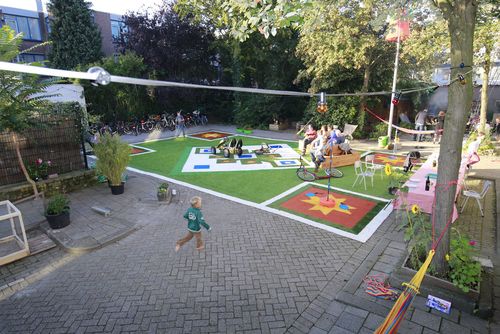
© Municipality of Rotterdam
For each of the Living Streets implemented up till now in Rotterdam, a
dedicated inter departmental team of 5-7 civil servants meet regularly
before and during implementation of the specific Living Street. They
advise the inhabitants on their plans and assist during implementation
when needed. The Living Streets are managed by the Urban Planning
department with a large involvement of the Traffic department and
Maintenance department.
The process of Dream Streets in Rotterdam is as follows:
- A new dream street initiative approaches the dream
coach of the city of Rotterdam. He assists them in defining their plan
and introduces them to the interdepartmental team (“Kendoe team”) which
advises on the plan and budget. They also check that the planned
activities comply with the regulations. This team meets once or twice
and they help to further improve the project and give support and
suggestions. Usually this process takes a couple of months. After this,
the Living Street submits their proposal for funding by the Citylab010
programme.
- The final proposal is assessed by the Living Street
project manager. The interdepartmental team formulates the conditions
for funding and the Living Street receives a subsidy contract. During
implementation, civil servants assist and advise if needed. This means
that in some Living Streets, there is a high level of involvement of the
city administration, while in other Living Streets there is much less.
In all cases, there are many formal and informal moments of contact
between the Living Streets and the civil servants as often, civil
servants attend the local Living Street events.
- After
implementation, each Living Street submits a financial and narrative
report on the results. Thereafter, the civil servants and the
inhabitants discuss together which of the temporary measures could be
continued or become permanent. Evaluation is also done by the Living
Street initiators, sometimes using monitoring equipment bought by the
municipality, but also based on a qualitative analysis.
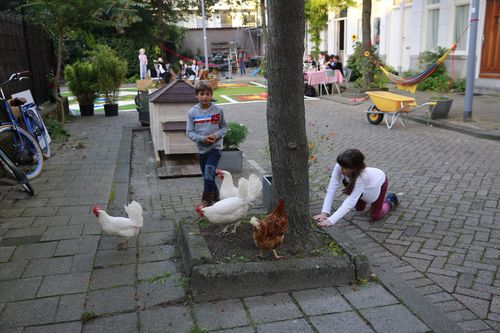
© Municipality of Rotterdam
The Dream Streets activities and their impact in the streets and the municipality
13 Dream Streets were organised between 2015 and 2017, covering
topics such as improving traffic safety, enhancing social cohesion,
building permanent places to play and meet, greening communal gardens.
Most Living Streets have a time span of one year in which they organise
several activities, mainly in spring and summer when the weather is
nice. The most represented social category is highly educated people,
however some Living Streets are also taking place in socially and
economically mixed neighbourhoods, where a professional organisation is
needed to develop the plan and coordinate the project together with the
citizens.
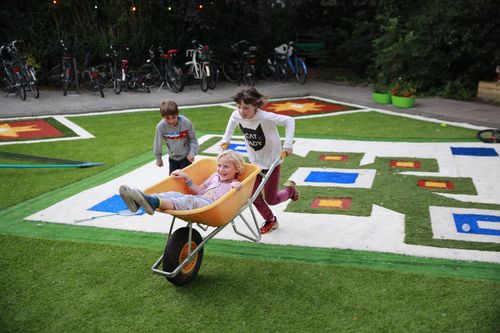
© Municipality of Rotterdam
The Dream Streets have diverse impacts. First, they bring more social
cohesion to the streets as well as an increased sense of ownership of
the public space by residents. Besides, these experiments, before
investing in permanent measures, enable the municipality to have more
insights on what works well or not in the streets to enhance meeting and
playing. Some measures then become permanent, such as reduced space for
car parking, benches, small playgrounds and meetings places. These
initiatives also have an impact on rethinking the role of the
municipality: How do we cooperate with citizens? What do they expect
from us? Are we capable to explain the municipal regulations for public
space well enough and how do we manage to bend the rules without
breaking them?
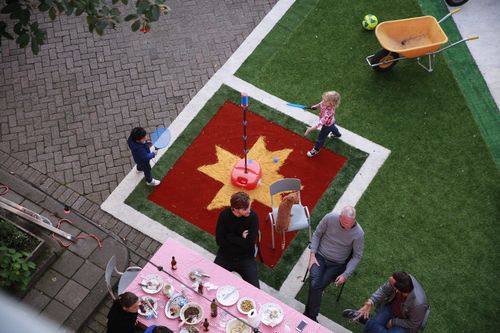
© Municipality of Rotterdam
Challenges ahead
The successful experience in Rotterdam has raised a number of key questions:
- How to deal with temporary versus permanent measures?
Most permanent measures concern the installation of bike parks, benches
and playgrounds. As this is public space, the city administration
should implement these measures and citizens are not allowed to do this
themselves. However, permanent measures need a budget, which is not
always available. Some solutions were found by the residents, for
instance via crowdfunding.
- How to deal with initiatives from professional organisations?
Professionals also approach the municipality with their ideas (like
architects, urban planners) and find citizens to join them. How to
ensure that the citizens feel and take ownership of the project? The
municipality then considers that at least 10 residents from the street
should support the proposal so that it can be accepted.
- High diversity: not everything is a Dream Street!
In Rotterdam, there is a high diversity of initiatives that qualify as
Living Streets. This is also a risk, as not every local initiative is a
Living Street. What to do with this diversity of proposals?
- Do we “spoil” our Dream Streets?
A Dream Street can receive a subsidy of up to 40,000 euros. The
positive effect is that real changes can be made, the negative effect is
that this may hinder creativity.
- To what extent do we coach the initiators in engaging their neighbours and getting their support?
Some initiators, especially in mixed neighbourhoods, find it difficult
to approach all neighbours in their street and to involve them in the
project. What kind of support should the municipal administration give
them?
- When is the support for the plan sufficient to continue and if not, how to deal with that?
Most Living Streets are initiated by highly educated people. In
socially and economically weaker neighbourhoods, professionals write and
submit the proposals and involve the citizens in the implementation.
Contact
Esther Sprangers, Project manager, City of Rotterdam
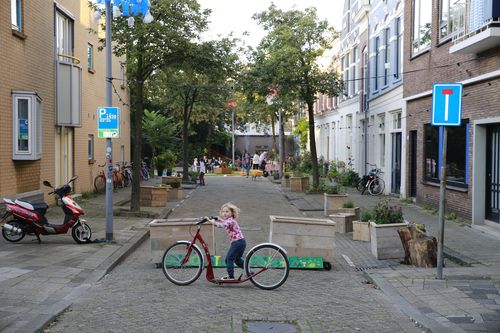
© Municipality of Rotterdam


